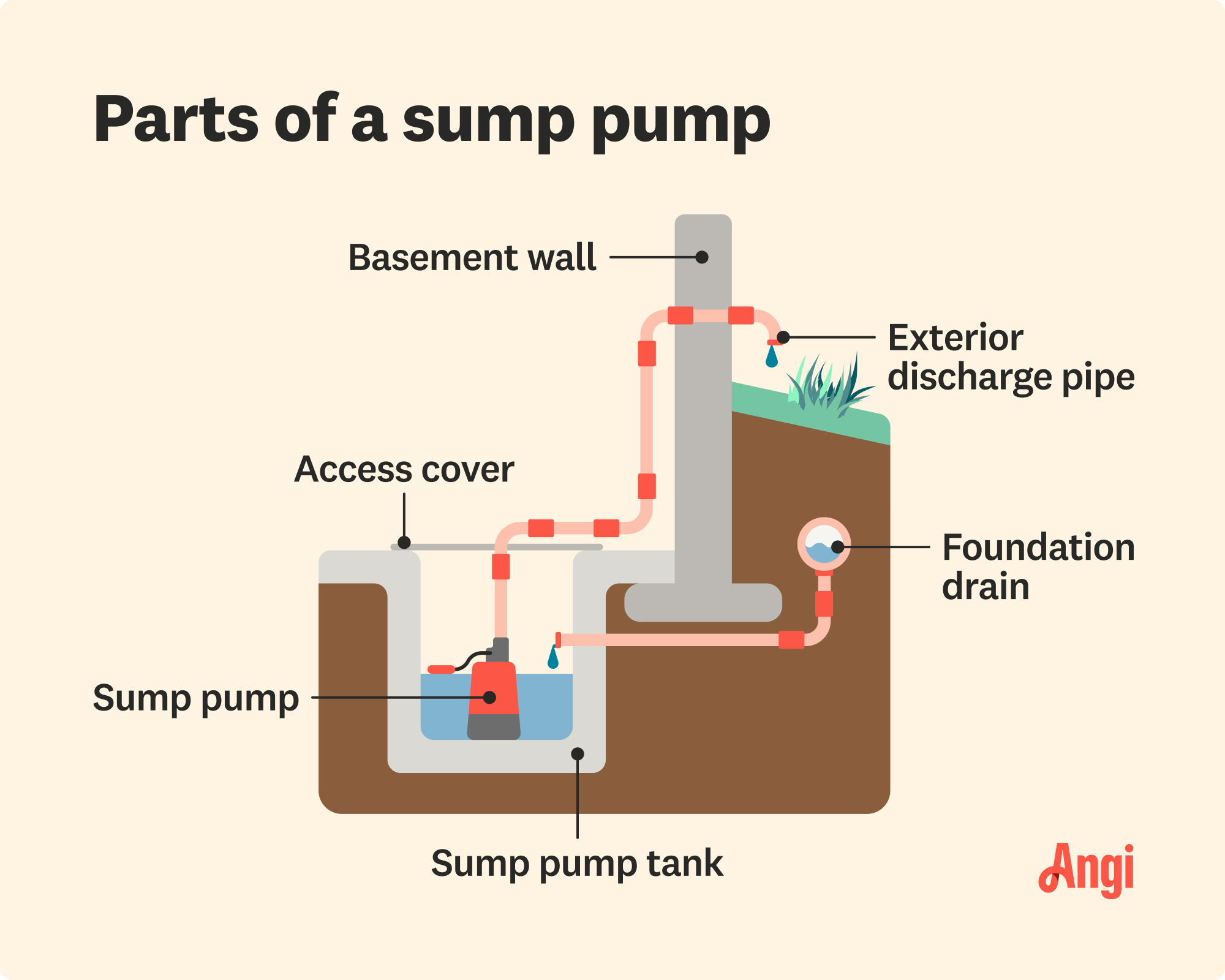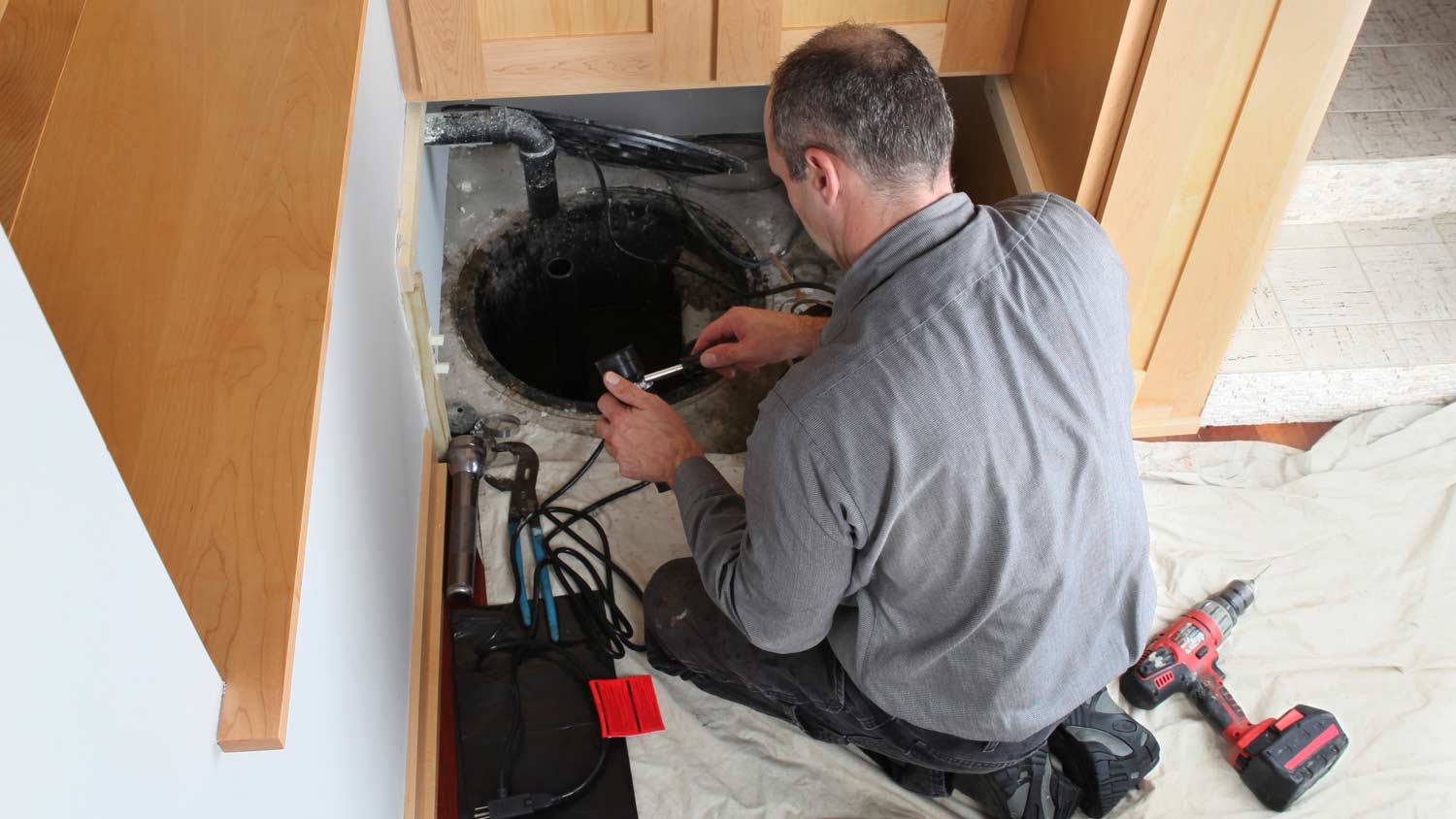Who Installs Sump Pumps? Everything You Need to Know
You should call a plumber to install your new sump pump


Installing a sump pump can seem like a simple project to DIY on the surface, but one wrong move could have costly ramifications. Hiring a plumber is the best way to protect your home’s foundation and basement from an underwater catastrophe, but you do have options. We’ve rounded up what you need to know about who installs sump pumps to help you get started on your project.
Benefits of Hiring a Plumber for Sump Pump Installations
Most sump pump installers are professional plumbing contractors who specialize in installing sump pumps. When you choose to work with a sump pump installer near you, you’ll benefit in several ways. A licensed plumber:
Has the skills to prevent leaks from happening
Can help prevent property damage from poorly installed sump pumps
Knows the ins and outs of sizing your sump pump
Strategically plans the location of a sump pump so that it most protects your home
Offers other services that go hand-in-hand with sump pump installations, like foundation repairs, leak repairs, vapor barriers, appliance installations, crawl space encapsulation, and more
May offer additional services at a lower rate if you’re already working with them
Most plumbers charge between $45 and $200 per hour for their services, and it takes roughly two to four hours to install a sump pump, putting your total labor costs at $90 to $400. But the cost could be well with the peace of mind that comes with a sound installation.

Can I DIY a Sump Pump Installation?
Simple sump pump installations can be DIYed if you have some idea on how to install a sump pump. Installing a sump pump yourself can save you on the cost of a professional sump pump installation. Your average sump pump installation cost falls between $1,200 to $2,500 if you decide to work with a local sump pump installer. If you install one yourself, you’ll spend somewhere between $100 and $500, which can be an enticing incentive for avid DIYers.
At the same time, not all sump pump installations are so straightforward—in fact, they can be quite difficult to install, and you definitely don’t want to mess up this type of installation with your foundation and basement’s structural integrity on the line. You need to know where to install the sump pump, what size motor you need, the best type of sump pump for the job, and how to install the sump pump correctly to make use of these savings.
If you're unsure about any part of the installation process, you could pay big-time in basement water damage restoration costs—anywhere from $1,300 to $6,100 to be precise.
For this reason, many homeowners prefer the added security that comes with hiring a licensed plumber to do the job. Your plumber will have the skills to install your sump pump correctly the first time around. They may also offer a generous workmanship warranty that protects your home from any damage related to the installation. Be sure to ask any installation company about warranties that they offer to be on the safe side.
Can I Hire a Basement Waterproofer for a Sump Pump Installation?

Not all homeowners go with a plumber for their sump pump installation. Others opt for a local basement waterproofing company for this type of project. Basement waterproofers also have the experience needed to install a sump pump, as sump pumps are most often used to prevent water from damaging basements. You might choose to work with a waterproofing company to complete the job if you have other basement-related projects in mind.
How Do Plumbers Install Sump Pumps?
Your plumber can take several steps to install a sump pump. Below is a general idea of how that process works, but always ask your pro how they go about the installation to get a complete picture of what to expect.
Permit Acquisition
First, your pro will contact the local building code office to ensure that you don’t need a permit. If you do need a permit, they’ll work with the department to acquire the necessary permits before getting the green light.
Electrical Set Up
If you’re installing a sump pump for the first time, it’s important to have a dedicated circuit breaker in place—don’t use an extension cord, as this can pose an electrical hazard.
Old Sump Pump Removal
If you have an existing sump pump, your pro must remove it first. To do so, they’ll crank off the power, disconnect the old sump pump, and dispose of the pump.
New Sump Pump Installation
For a new sump pump installation, your plumber or basement waterproofer will follow the instructions provided with the sump pump you selected. These steps will generally go as follows:
Choose a location.
Dig a hole.
Insert the sump pump.
Protect the base from clogs using filter fabric.
Cover the pump with gravel and a paver.
Run the necessary pipes.
Plug in the sump pump.
Cover the hole with concrete.
Frequently Asked Questions
No, homeowners insurance policies do not typically cover sump pump installation. However, some companies may offer incentives in the form of discounts or reduced premiums if homeowners install sump pumps. Insurance companies do this because sump pumps can reduce water damage claims. You may also be able to obtain enhanced water-backup coverage after installing a sump pump.
The life span of a properly maintained sump pump is about a decade. The broader life span for sump pumps is five to 15 years. If your sump pump is tripping a breaker or showing other signs of malfunction, it may be time to consider a replacement regardless of your sump pump's age. You should have someone who installs sump pumps check for corrosion and worn spots to stay ahead of issues with your sump pump. Additionally, replacing the float switch every two years is part of routine sump pump maintenance.
Yes, a sump pump is something that can make a home much more desirable because it protects against water damage. Adding a sump pump can also allow you to add more livable space by making your basement usable. When selling a home, your buyers may have more peace of mind about the property's condition if they see that a sump pump is being used.





- Gas Plumbers
- Plumbing Repairs
- Sump Pump Installation
- Wood & Pellet Stove Repair
- Shower Repair
- Wood Stove Services
- Emergency Plumbers
- Fire Sprinkler Contractors
- Perc Test Companies
- Toilet Repair & Installation
- Boiler Repair
- Sewer Line Repair
- Faucet Repair
- Main Drain Camera Companies
- Foundation Drain Installation
- French Drains
- Bathtub Replacement
- Subcontractors
- Storm Drain Contractors
- Affordable Plumbing
- Plumbing & Heating Companies
- Bathroom Repair Services
- Sink Installation
- Commercial Plumber
- Barndominium Builders
- Water Line Repair
- Faucet Installation
- Water Line Installation
- Leak Detection
- How Long Do Sump Pumps Last? Is It Time to Replace It?
- When To Replace a Sump Pump: A Homeowner’s Guide
- What to Do When A Sump Pump Alarm Goes Off
- What To Do When Your Sump Pump Runs Constantly After Heavy Rain
- What Is a Sump Pump and How Does It Work?
- Where Does Sump Pump Water Go? A Guide for Homeowners
- 6 Reasons Why Your Sump Pump Is Tripping the Breaker
- Why Your Basement Still Flooded With a Sump Pump
- Sump Pump Constantly Running? What You Need To Know
- 4 Reasons Your Sump Pump Smells Like Sewage (and What to Do About It)















